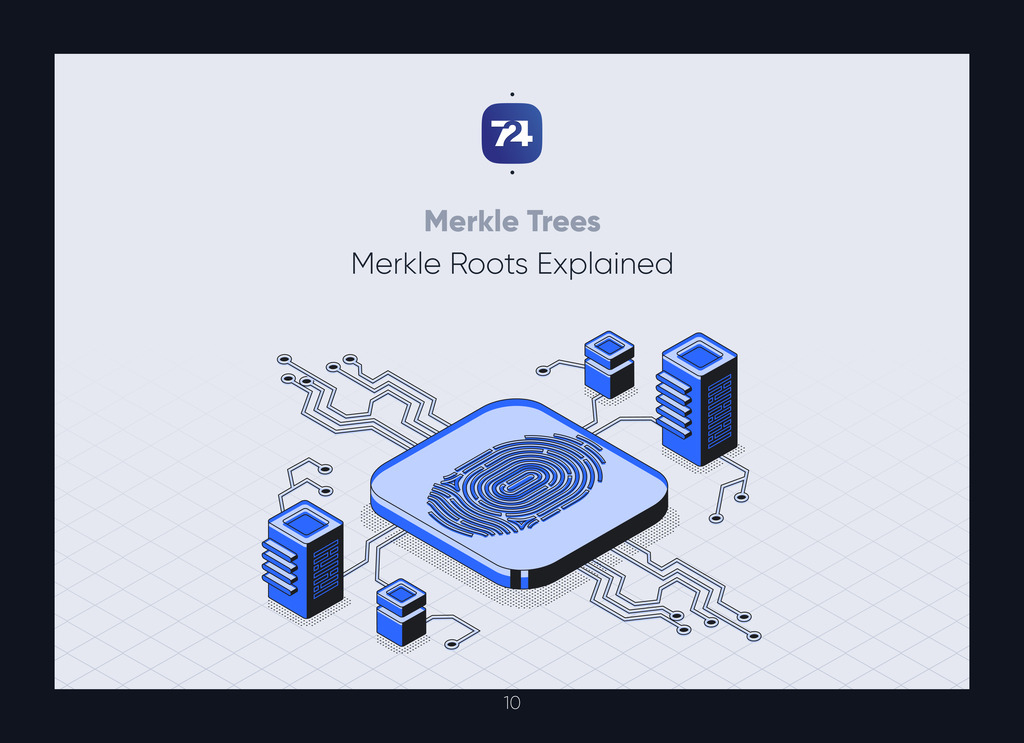Merkle Trees and Merkle Roots Explained
Introduction
In the world of computer science and cryptography, Merkle trees (also known as hash trees) play a crucial role in ensuring data integrity and security. These structures are integral to various applications, particularly in blockchain technology and peer-to-peer networks. Merkle trees provide a way to efficiently and securely verify the contents of large data structures, making them indispensable in systems where data integrity is paramount. This article delves into the intricacies of Merkle trees and Merkle roots, exploring their structure, functionality, and applications.
The Structure of Merkle Trees
Basic Concept
A Merkle tree is a binary tree where each leaf node contains the cryptographic hash of a data block, and each non-leaf node contains the cryptographic hash of its children. This hierarchical arrangement ensures that any change in the input data, no matter how small, results in a completely different Merkle root, making it easy to detect any alterations.
Construction
- Leaf Nodes: The first step in constructing a Merkle tree involves creating leaf nodes. Each leaf node is a hash of a data block. If we have a set of data blocks [D1,D2,D3,D4][D1, D2, D3, D4][D1,D2,D3,D4], we first compute their hashes: H(D1),H(D2),H(D3),H(D4)H(D1), H(D2), H(D3), H(D4)H(D1),H(D2),H(D3),H(D4).
- Pairing and Hashing: These leaf nodes are then paired, and each pair is hashed together to form the parent nodes. For instance, H(H(D1)+H(D2))H(H(D1) + H(D2))H(H(D1)+H(D2)) and H(H(D3)+H(D4))H(H(D3) + H(D4))H(H(D3)+H(D4)).
- Recursive Pairing: This process continues recursively, pairing and hashing until a single hash value is obtained, which is known as the Merkle root.
Merkle Roots
The Merkle root is the single hash value at the top of the Merkle tree. It encapsulates the integrity of all the underlying data blocks. Any change in any of the data blocks will result in a different Merkle root, making it an effective tool for verifying data integrity.
Advantages of Merkle Trees
Efficiency
One of the primary advantages of Merkle trees is their efficiency in verifying data integrity. Instead of comparing entire data sets, which can be computationally expensive, we only need to compare the root hashes.
Scalability
Merkle trees are highly scalable. They can handle large amounts of data efficiently, which is why they are used in systems that deal with substantial data volumes, such as blockchain networks.
Security
By using cryptographic hash functions, Merkle trees ensure that any tampering with the data can be easily detected. This security feature is particularly valuable in decentralized systems where data integrity must be maintained without a central authority.
Applications of Merkle Trees
Blockchain Technology
In blockchain technology, Merkle trees are used to organize and verify transactions. Each block in a blockchain contains a Merkle root that summarizes the transactions within that block. This structure allows for efficient and secure verification of transactions, ensuring the integrity of the blockchain.
Peer-to-Peer Networks
Merkle trees are also used in peer-to-peer networks to verify the integrity of data shared among peers. For example, in BitTorrent, Merkle trees are used to ensure that downloaded files are not corrupted or tampered with.
Distributed File Systems
In distributed file systems, Merkle trees help maintain data integrity across multiple storage nodes. They enable efficient data verification and recovery, ensuring that the distributed system remains robust and reliable.
Case Study: Bitcoin Blockchain
Bitcoin, the first and most well-known cryptocurrency, utilizes Merkle trees to manage and verify transactions. Each Bitcoin block contains a Merkle root that summarizes all the transactions in that block. To verify a specific transaction, one only needs the transaction’s hash and a set of intermediary hashes, rather than the entire data set. This process, known as Merkle proof, is efficient and secure, enabling Bitcoin to maintain its decentralized nature.
Conclusion
Merkle trees and Merkle roots are foundational components in modern cryptographic applications. Their ability to efficiently and securely verify data integrity makes them indispensable in various fields, from blockchain technology to distributed file systems. As we continue to rely on digital systems for storing and managing data, the importance of structures like Merkle trees will only grow, ensuring that our data remains secure and trustworthy.
